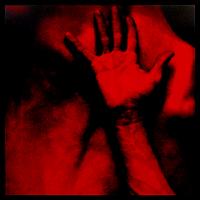Interview to Massimo Attardi
Massimo Attardi: If we define reality as complex of actions happening around us in a certain moment, well when we point with our camera we do have a spatial limit and when we shoot, we fix an instant that it wasn’t and it won’t be. Therefore, if we want to define photography we should say that, what we see in a picture, is not reality, but rather a part (the one focused) of that instant reality.
It is anyway a good word game. I don’t think a position is to be taken, as both way of thinking produced wonderful works.
I think that my pictures are “my” version of reality, I couldn’t see it differently, I should be worried if it wasn’t so.
Fabiano Busdraghi: Ok, you find me absolutely with you. The produced images are important. Bichromate gum can be used to obtain pictorial effects or to have a direct photographic look. Your images, seen the choice of colors and your way of using gum, are partially photorealistic. Then why do you often underline they do not come from a retouch?
Massimo Attardi: One thing should be specified when printing pictures on paper. Sometime a zone is masked or burned, when developing. A zone is scratched to take the best out from a detail, then it is scored when dry. May we call them retouches? I don’t know, but I do similar interventions.
When I specify that my works are not retouched, I’m not saying that any intervention has been taken, but that if any intervention has been taken, it didn’t substantially modified the work.
This is the right statement for those who approach the work; it is correct that they know the nature of the work itself.
Sometime people look at my works and they do not understand if it is painting, a printed picture sticked on a wood tablet (and if I don’t say it, they do not even notice that it is printed on wood). Once they learned this, I’m always asked if I paint on my pictures and my answer is that “it is a real picture, there’s no painting or other kind of intervention”. Clearly an insider of bichromate gum doesn’t need any explanation, therefore all my assertions are not directed to those familiar with bichromate gum prints, but to all those (many) people who doesn’t know it.
Keeping in mind that I’m not contrary to, even strong, interventions on images and that I could intervene myself on pictures one day.
Then, when I shoot, print, choose colors I force the real nature of the image, therefore, for sure! it is my personal interpretation or twisting (that is modification following my sensitivity and taste) of an event I captured with my own camera.
Fabiano Busdraghi: Which book are you reading? What music are you listening to? In your work, you mix photography and painting. Have you ever found contact points between photography and literature or picture and music? Are your inspirations only visual?
Massimo Attardi: I’m reading “No logo” by Naomi Klain. I listen to Mozart, Colle der Fomento, America, Metallica, Fiona Apple, Buscaglione, the good old Sepultura, Glenn Gould, l’immancabile Charlie (Parker), etc.
There are several contact points, but they are unconscious. Music touches everything, how could anyone live and work without it?
Fabiano Busdraghi: Your works spread through the classical ways of diffusion - galleries, expositions, papers publications and so on - or is it related to the new artistic circuits that are starting on the net? What do you think about those kind of initiatives?
To read the rest of this article go to page: 1 2 3 4 5








Camera Obscura » La prima candelina
said, June 7, 2008 @ 12:32 PM :
[...] Intervista a Massimo Attardi 1,623 visite [...]
Camera Obscura » Le nuove gomme bicromate su legno di Massimo Attardi
said, June 9, 2008 @ 10:20 AM :
[...] abbiamo detto nell’ultimo post, l’intervista a Massimo Attardi è in assoluto l’articolo più cliccato di Camera Obscura. I lettori saranno quindi felici di [...]
davide
said, October 9, 2008 @ 8:01 PM :
Sono stupito dai tuoi quadri sono molto belli e come tu li realizzi.